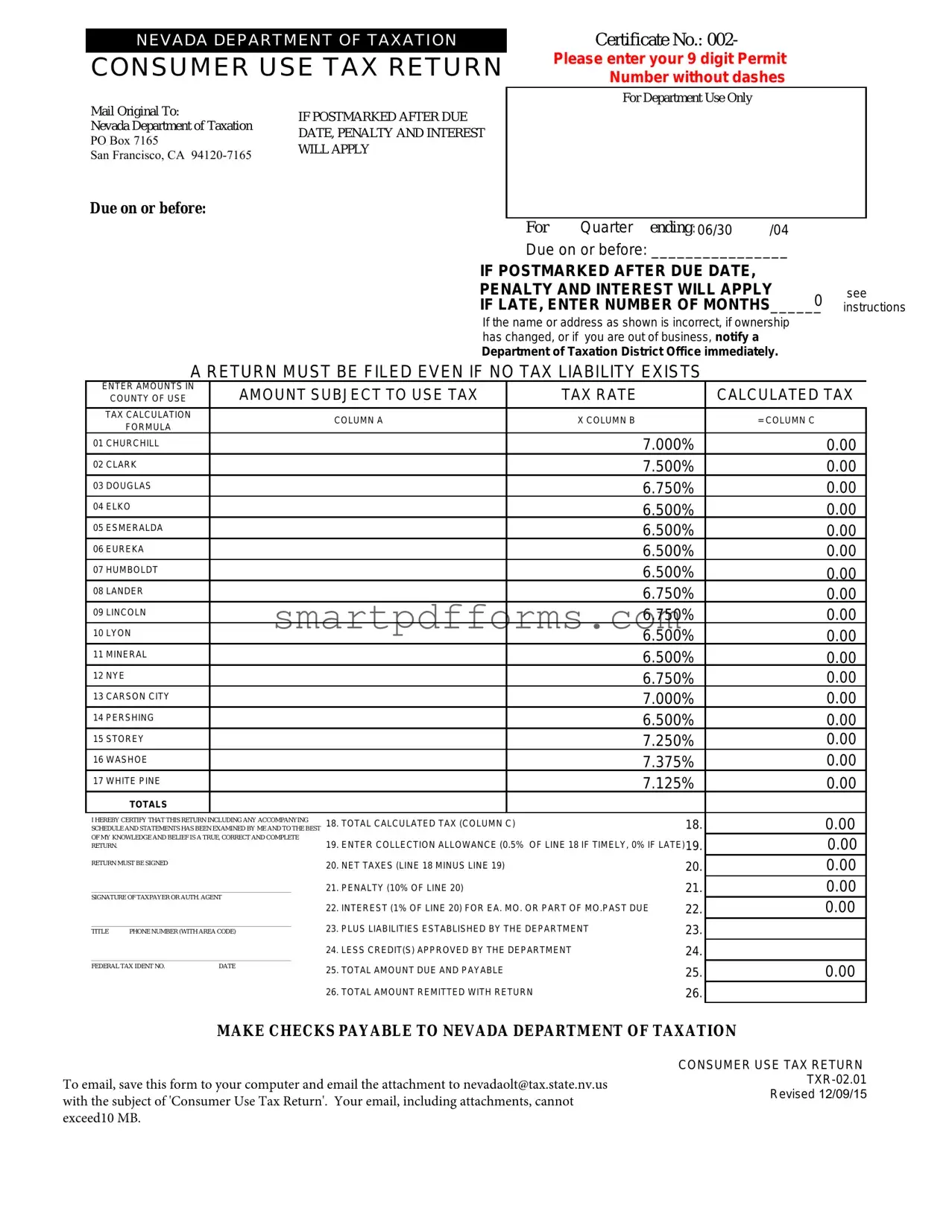CONSUMER USE TAX RETURN INSTRUCTIONS
COLUMN A. Amount subject to Use Tax: Enter total purchases subject to use tax on appropriate county line. All purchases of tangible personal property on which no Nevada sales tax has been paid must be entered here.
COLUMN C. Calculated Tax: Multiply taxable amount(s) (Column A) by tax rate(s) (Column B) and enter in Column C.
Note: If you have a contract exemption, give contract exemption number.
TOTALS: Enter total amount of Column A.
LINE 18. Total calculated tax from column C
LINE 19. Collection allowance: Compute 1/2% (or .005) X Line 18 if return and taxes are paid as postmarked on or before the due date as shown on the face of the return. If not postmarked by the due date the collection allowance is not allowed.
LINE 20. Net Taxes Due: Subtract Line 19 from Line 18.
LINE 21. If this return will not be postmarked, and the taxes paid on or before the due date as shown on the face of this
return, a 10% penalty will be assessed. Enter 10% (or .10) times Line 20.
LINE 22. If this return will not be postmarked and the taxes paid on or before the due date as shown on the face of this return, enter 1.5% times line 20 for each month or fraction of a month late, prior to 7/1/99. After 7/1/99, use 1% for each month or fraction of a month late.
LINE 23. Enter any amount due for prior reporting periods for which you have received a Department of Taxation debit notice. Monthly notices received from the Department are not cumulative.
LINE 24. Enter amount due to you for overpayment made in prior reporting periods for which you have received a Department of Taxation credit notice. Monthly notices received from the Department are not cumulative. Do not take the credit if you have applied for a refund.
NOTE: Only credits established by the Department may be used.
LINE 25. Total Taxes Due and Payable: Add Line 20, 21, 22, and 23. Subtract amount on Line 24. Enter total.
LINE 26. Total Amount Remitted: Enter total amount paid with this return.
PLEASE COMPLETE THE SIGNATURE PORTION OF THE RETURN AND RETURN IN THE ENVELOPE PROVIDED.
If you have questions concerning this return, please call one of the Department of Taxation offices listed below.
Carson City (775) 684-2000 |
Las Vegas (702) 486-2300 |
Reno (775) 688-1295 |

